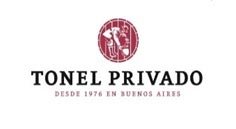Unique Terroir 
Bodegas Etchart’s centennial history, the Cafayatean culture deeply rooted to wine and the privileged natural environment of the Calchaquí Valleys, are the perfect formula to achieve unique wines which have no exact copy.

From The Height

The Cafayatean terroir, with heights ranging from 1,700 and 3,000 meters above sea level, has vineyards that are among the highest in the world and are the key element of their identity. One of the most important aspects of high-altitude winegrowing is that the high temperatures and the daylight sunstroke are balanced with the fresh air that flows around during the night. This sharp thermal amplitude allows the grapes to reach maturity after accumulating a fair amount of the components required by quality wines: strong aromas and tannins in case of red wines. The difference between day and night temperatures also favors the development of fruits with natural acidity levels sufficient to make fresh and flowing wines.
Height makes Saltenean wines to have stronger aromas, colors and personality, more expressive red and white ones, different from those made in other Argentine terroirs.
Unique Terroir

The result of interaction with the climate, the soil, the geographic location, the height, the vines and the work of every person involved in the winemaking process is the Saltenean wines´ unique expression and personality.
As in the case of every large terroir worldwide, the Cafayatean terroir has singular
characteristics that make it special, such as the red and white wines made there. The height exceeding 1,700 meters above the sea level, its thermal amplitude, its sandy soil, the mountainous nature surrounding the valley and the careful work in its vineyards are crucial for the character of the Bodegas Etchart´s wines.
Cafayate Today

Because of its authenticity and its smooth pace, it seems that the passage of time did not have great impacts on Cafayate. However, it is a modern terroir, whose wines have a defined identity and character of its own. In the Calchaquí Valleys, wine is pretty much the same in terms of its winemaking process and its accurate expression of the terroir where it is grown, although the passage of time and the evolution of technical knowledge had made it cleaner, purer, more modern and more up-to-date. Always preserving its noble essence.
This subtle but substantial changes took place more in the vineyards than in the wineries: today, we grow healthier grapes taking each of the various factors that make an area or plot more or less suitable for a specific vine or a style of wine.
Us and The Valley

Our history and that of the valley have been linked for more than 165 years. In 1850, one decade after the foundation of Cafayate’s city council, Flavio Niño y Plazaola decided to start a winegrowing activity in this unexplored location on the map. In those times, when the region was not even a project of what it turned out to be, this visionary set up his first white vines there.
With the 20th century underway, more precisely in 1938, Arnaldo Benito Etchart bought this winery which belonged to his wife, Carmen Rosa, and her family, and started the development process which led its establishment to become what it is today: one of the most prestigious wineries of Argentina.
Bodegas Etchart is the oldest operating winegrowing premise in the valley and one of the best proven record in Argentina: an authentic synonym for Cafayate and its high-altitude wines.
Our Winery

The history which started as the adventure of a pioneer who acted by intuition seems to be endless; it is just under constant development. Year after year, Bodegas Etchart makes over 10 million bottles commercialized in Argentina and in 30 countries throughout the world. Today the winery has more than 400 planted hectares, of which 50% belongs to Torrontés, a number that also accounts for a 45% of the total production of this variety throughout all the Calchaquí Valleys. With a storage capacity exceeding 12 million liters, it makes a great variety of labels based on red and white vines, and its oenological and agronomic team constantly tests with extremely rare varieties in northern Argentina.








